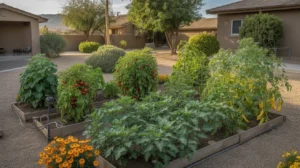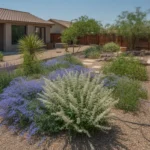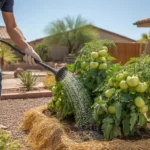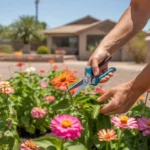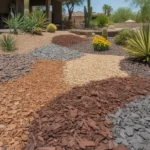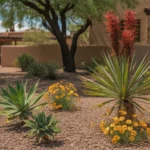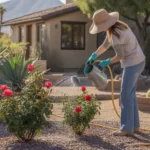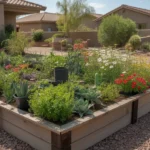Summer in the Southeast Valley brings unique challenges and opportunities for gardeners. With soaring temperatures and intense sun, it’s crucial to choose the right plants and provide proper care to keep your garden thriving. Whether you’re a seasoned green thumb or a novice, these tips will help you navigate the summer dilemmas and create a beautiful, bountiful garden. 🌿
Timing is Everything: When to Plant in Summer
One of the biggest questions Southeast Valley gardeners face is when to plant in summer. While spring and fall are prime planting seasons, there are still opportunities to add to your garden in the warmer months. The key is to choose the right timing and the right plants.
For most summer crops, the best time to plant is in early to mid-summer, typically May through July. This allows the plants to establish before the peak of the heat arrives. Some fast-growing crops like beans, squash, and cucumbers can even be planted in succession every few weeks for a continuous harvest.
When planting in summer, it’s important to provide extra care and attention to help the plants adapt. Water deeply and regularly, especially during the first few weeks after planting. Mulch around the base of the plants to help retain moisture and regulate soil temperature. Providing shade during the hottest part of the day can also help prevent stress and sunburn on young plants.
Heat-Loving Edibles: Top Crops for Summer Gardens
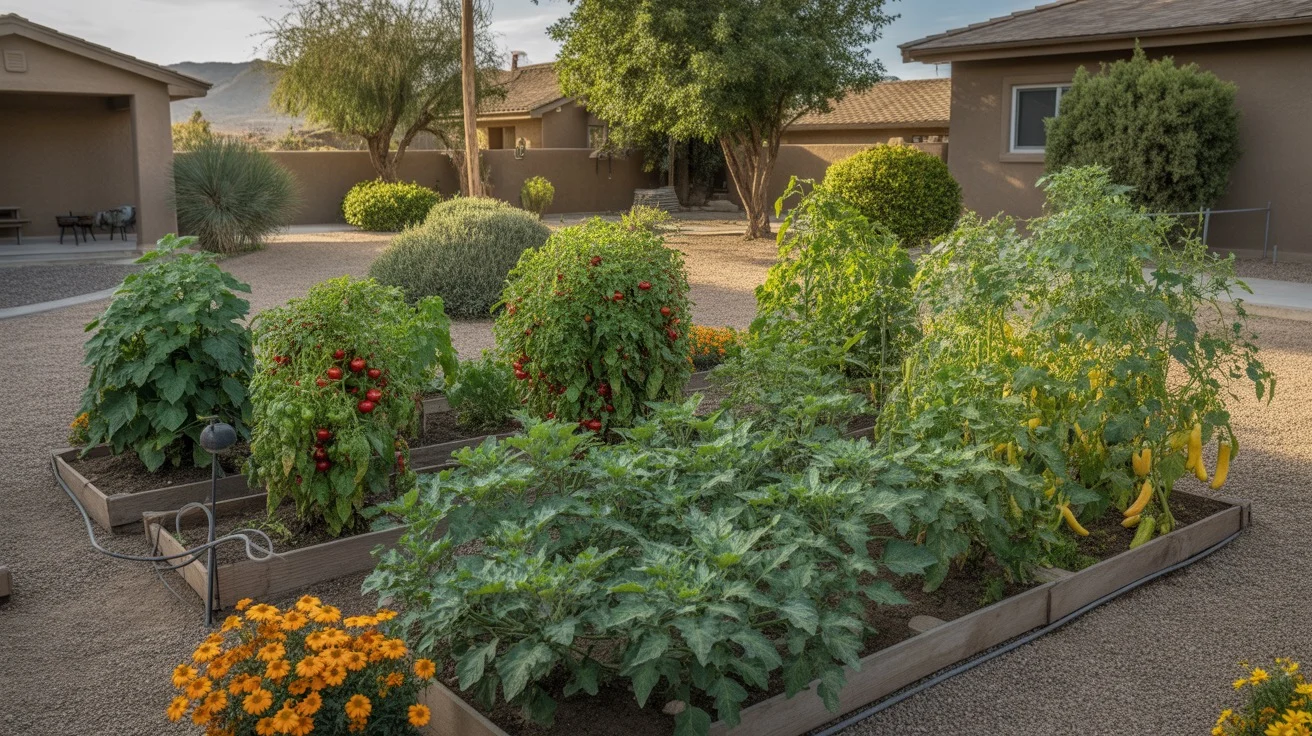
While the intense heat may limit some plant choices, there are plenty of edibles that thrive in the Southeast Valley summer. These heat-loving crops are well-adapted to the high temperatures and produce bountiful harvests with the right care.
Some of the best summer crops for the region include:
- Tomatoes 🍅 – Choose heat-tolerant varieties like ‘Heatwave II’, ‘Solar Fire’, or ‘Phoenix’
- Peppers 🌶️ – From sweet bells to spicy jalapeños, peppers love the heat
- Eggplant 🍆 – Varieties like ‘Black Beauty’ and ‘Fairy Tale’ perform well
- Okra – This Southern staple thrives in hot conditions
- Melons 🍉 – Watermelon, cantaloupe, and honeydew are summer treats
- Squash – Summer squash and zucchini are prolific producers
- Beans – Pole beans and bush beans can be planted in succession
- Basil 🌿 – This aromatic herb flourishes in the heat and pairs perfectly with tomatoes
When growing summer edibles, consistent watering and feeding are essential. Install drip irrigation or soaker hoses to provide a steady supply of moisture at the roots. Feed plants regularly with a balanced, slow-release fertilizer to support healthy growth and fruit production. Monitor plants closely for signs of heat stress, pests, or disease and take action promptly.
Blooms that Beat the Heat: Summer Flower Power 🌺
Flowers bring color, beauty, and pollinators to the summer garden. While some delicate blooms wilt in the heat, there are many tough, vibrant varieties that thrive in the Southeast Valley summer. These heat-tolerant beauties will keep your garden looking lush and lively even on the hottest days.
Top picks for summer flowers include:
- Zinnia – Bright, bold, and easy to grow from seed
- Marigold – Cheery flowers in warm shades of yellow, orange, and red
- Gaillardia (Blanket Flower) – Daisy-like blooms in fiery hues
- Celosia – Unique textural flowers in eye-catching shapes and colors
- Cosmos – Delicate flowers dance on tall stems, attracting pollinators
- Gomphrena (Globe Amaranth) – Cute, clover-like flowers in a range of colors
- Pentas – Clusters of star-shaped flowers beloved by butterflies
- Angelonia – Spikes of orchid-like blooms in shades of purple, pink, and white
To keep summer flowers looking their best, deadhead spent blooms regularly to encourage continuous flowering. Provide ample water, especially during dry spells, and feed every few weeks with a bloom-boosting fertilizer. Many summer annuals can also be grown in containers, allowing you to add pops of color to patios, entryways, and poolside areas.
Maintaining the Summer Garden: Tips for Southeast Valley Conditions
Caring for the summer garden in the Southeast Valley requires some special considerations. The intense heat, strong sunlight, and monsoon rains can take a toll on plants if not managed properly. These tips will help you keep your garden healthy and vibrant all season long.
Watering is one of the most critical aspects of summer garden care. Deep, infrequent watering is better than shallow, frequent irrigation. This encourages plants to develop deep root systems that are more resilient to heat and drought. Water early in the morning to allow plants to absorb moisture before the heat of the day sets in. Avoid overhead watering, which can lead to fungal issues and evaporation.
Mulching is another key strategy for summer garden success. Apply a thick layer of organic mulch, such as straw, compost, or wood chips, around the base of plants. This helps retain moisture, regulate soil temperature, suppress weeds, and add nutrients to the soil as it breaks down. Be sure to keep mulch a few inches away from the stems of plants to prevent rot.
Providing shade and ventilation is also important, especially for heat-sensitive plants. Use shade cloth, lattice, or strategically placed taller plants to create pockets of relief from the intense midday sun. Ensure good air circulation around plants to prevent fungal diseases and heat buildup. Avoid overcrowding and prune selectively to improve airflow.
Finally, be vigilant about monitoring for pests and diseases. The warm, humid conditions of the Southeast Valley summer can be a breeding ground for garden foes. Check plants regularly for signs of distress, such as wilting, discoloration, or insect activity. Address issues promptly with targeted treatments, such as insecticidal soaps, horticultural oils, or fungicides, following label instructions carefully.
With the right plant choices, timing, and care, your Southeast Valley summer garden can be a lush oasis filled with delicious edibles and vibrant blooms. Embrace the unique challenges and opportunities of the season and enjoy the bounty of your green thumb efforts. 🌻

